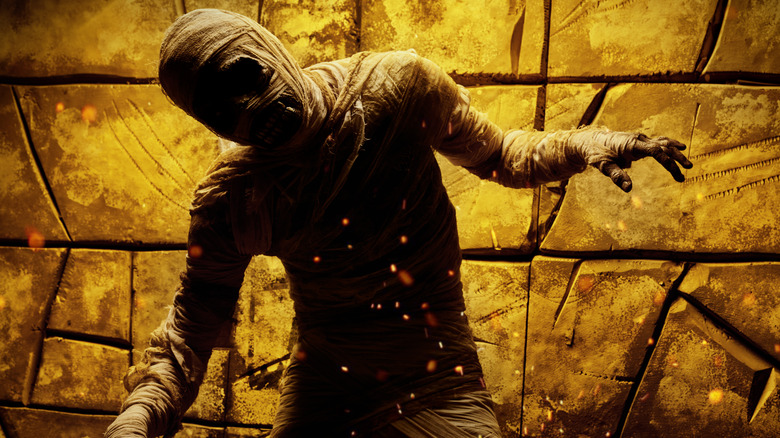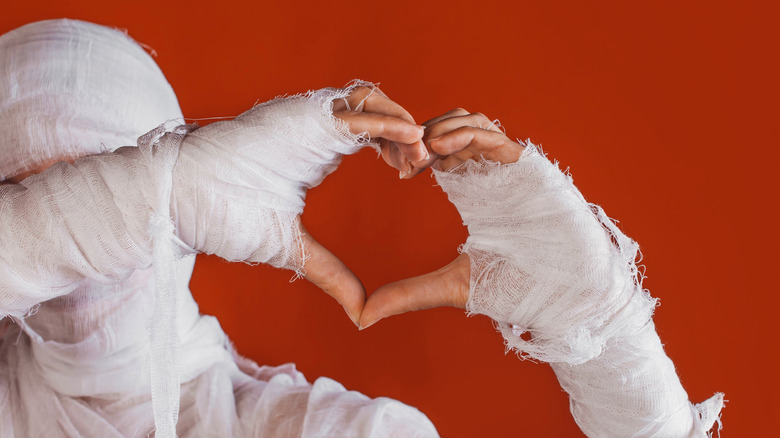How Mummy Parts Were Once Used As Medicine
The World History Encyclopedia reports that the notion of the soul was a deep and complex one to the people of Ancient Egypt. For them, a loved one's essential essence consisted of nine different elements, the most notable being the Ba (a bird-like being with the face of the deceased that could flit between the mortal world and the afterlife), the Khat (the body itself), and the Ka (a spiritual form of the person). The former and the latter, World History Encyclopedia goes on, could not exist without a person's physical remains. This is why the Khat needed to be preserved through the laborious process of mummification. These mummies, when discovered in later centuries, were actually used in various medicines. Here's how.
As Mental Floss reports, the culture of Ancient Egypt has intrigued the world for centuries. This, sadly, has led to countless cases of tombs being desecrated and robbed and mummies being unceremoniously destroyed or otherwise disturbed. According to Vice, the upper crust of Victorian society in late-1800s Britain considered mummy unwrapping parties to be the height of sophisticated entertainment, with a little grim scientific value to boot. Surgeon Thomas Pettigrew performed several, and they would attract crowds of around 3,000 people.
Mysterious medical marvel mummies
This ghastly fascination with mummies dates back much further, however. In the Middle Ages, a product known as mummy (which was made from the crushed bodies of mummies) was a popular product in apothecaries, per Britannica. The Pharmaceutical Journal states that there was a long-held belief in the healing properties of mummy remains, which may be attributed to the fact that they were believed to have been made with bitumen from the Dead Sea (an assertion that might have been false).
The Pharmaceutical Journal goes on to suggest that mummy medicines were frequently used as treatments for ailments as varied as abscesses and diseases of the spleen. Merck Group adds that powdered mummy was sometimes seen as nothing less than a magical cure-all elixir (dubious as such claims often proved to be in practice). Naturally, this tremendous demand meant that some throughout the ages have been less than honest about the authenticity of their medical marvel mummies. Per The Pharmaceutical Journal, the king of Navarre's doctor, Guy de la Fontaine, traveled to Alexandria in 1564 to secure a supply of mummies for the king. The trader he spoke to revealed that his mummies largely consisted of the bodies of contemporary workers, which the trader had prepared with bitumen and left to dry in the sun until they resembled the genuine article.

